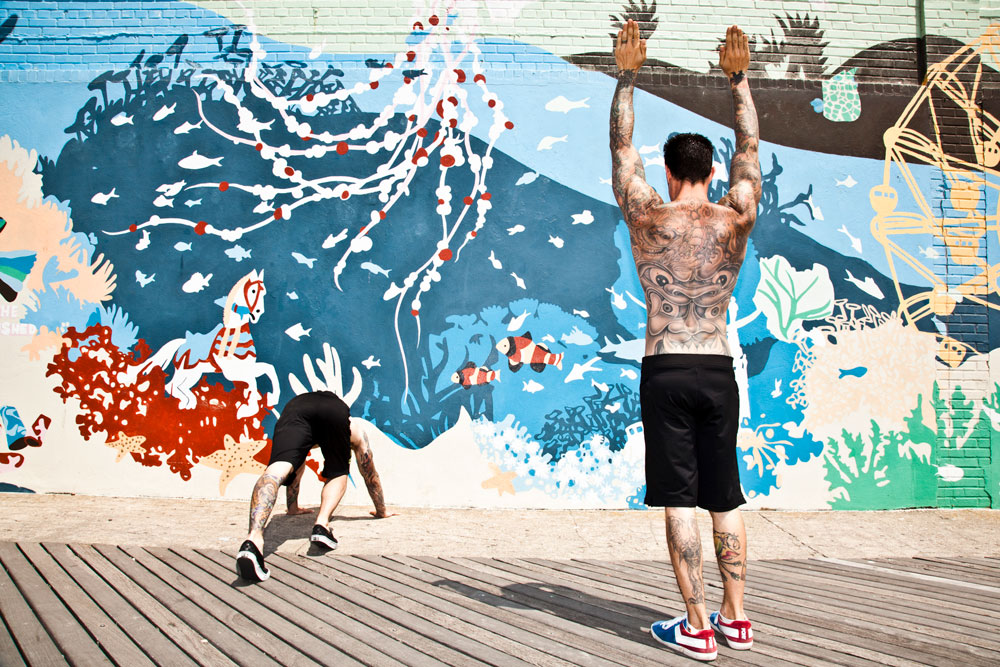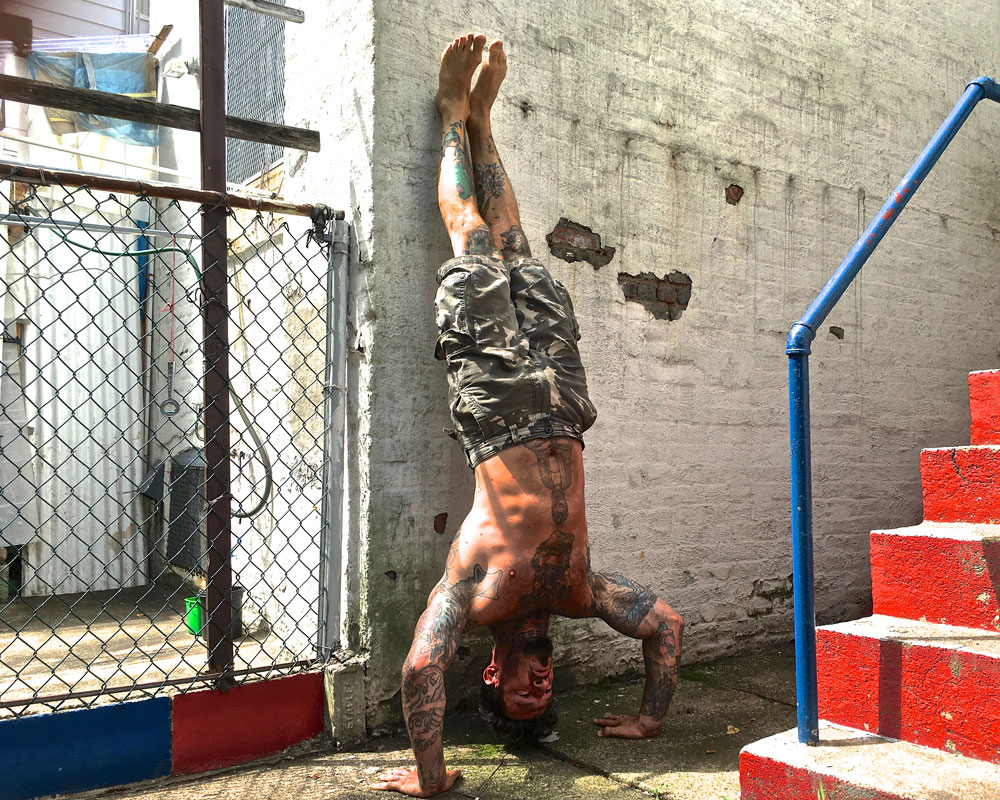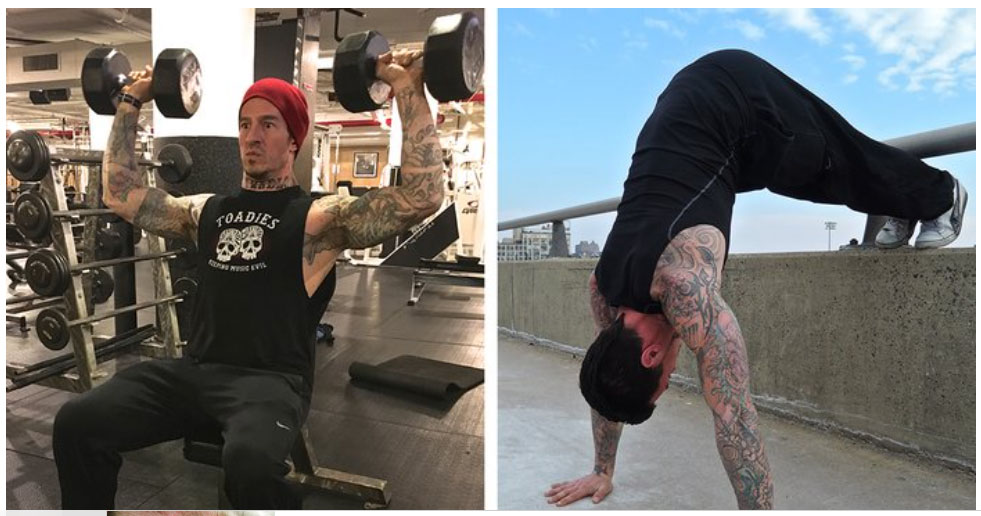HYBRID STRENGTH TRAINING Q & A Part I — The TOP 5 Questions
By Danny Kavadlo

I am happy to report that three months after its release, my latest Dragon Door title
HYBRID STRENGTH TRAINING — How to Get Jacked and Shredded with Calisthenics & Free Weights has inspired a lot of folks to get fit! I’d like to personally thank every single one of you who sent me a DM, email or public comment keeping me abreast of your progress. The fact that Hybrid Strength Training is such an effective way to get strong and powerful is, in part, the result of hearing from the fitness community over the years.
That’s right. Many components of HST (the inclusion of multiple programs, set/rep schemes, recovery, weighted calisthenics training, and more) were based on the requests of readers. While these elements have been part of my personal training for many years, it’s because of your questions in the past that they currently exist in print.
Your feedback is very important.
On that note, Dragon Door and I recently hosted a live Q & A Session in the
Hybrid Strength Training Users Group on Facebook. Many excellent questions — and surprising answers — were raised. This is the first of two articles highlighting some of the best and most frequently asked questions that were brought up in the live chat. Some text has been edited for clarity and brevity. You want answers? You got it!
1. How can I build my mental confidence for handstands?
Handstands — even against a wall — are tricky business. In addition to the intrinsic flexibility and strength demands addressed in
HYBRID STRENGTH TRAINING, there is also a grand mental component.
Inversions challenge your proprioception. In other words, simply being upside down challenge your awareness of where you are spatially in the universe. Up is down, front is back, right is left. One way to improve proprioception is simply to spend time in a wall handstand (provided you can get into position in the first place). Try using a timer, and then incrementally increase how long you can hold it over the course of several training sessions. Keeping track is helpful. It is impossible to really know how long your holds are without timing them.
Looking in between your hands so you can see your fingers on the ground can be helpful too. This visual cue gives you a perceptive advantage. That said, it’s worth mentioning that this head position will cause you to arch your spine slightly, which is OK. A lot of the time, when we picture a handstand, we envision a perfect gymnast-style "10," in a completely hollow position. However, we’re not competitive gymnasts and we’re not competing for points. The spine is capable of extending, flexing and twisting. Barring injury (in which case one should probably avoid handstands in general), a curved spine is perfectly acceptable when learning a wall handstand.

2. But what if I still can’t kick up in the first place?
If you still are having trouble with kicking up, then it’s time to re-assess the basics. Are your elbows locked? If not, then lock them. You want all the skeletal support you can get. How is your grip? Spread out your fingers. Actively press into the ground. Try a few practice kick-ups gradually getting higher and higher. After a few attempts of graduating effort, you should be able to get your hips above your shoulders. You may have to kick up harder than you think. If you still feel this is not currently accessible then you may require a different approach, at least for now.
A handstand can also be done facing a wall and "walking" up, thus avoiding the explosive kick. (This method is also a great way to get a feel for straight-back handstands, as you cannot arch while facing a wall or you’ll fall backwards.) TO get in position, start in a plank with your feet against the wall and your hands on the floor. Walk your feet up as you gradually crawl your hands back toward it. When you’ve gotten close to the wall, press from your shoulders, flatten your lower back and point your toes.
Although the walk-walk handstand is more accessible for many, still, for a number of reasons varying from mobility to strength limitations to injury, ailment or disability, wall handstands (and handstand push-ups) are simply not appropriate for everyone. Which is fine.
Part of the message in
Hybrid Strength Training is that in order to get the best individual results out of any program, certain aspects of said program may at times need to be altered.
3. Should I substitute a different exercise for handstands (or handstand push-ups, shoulder press, dips, etc.)?
The answer to this question differs from individual to individual, but the short answer is Yes — if the exercise as written is truly inaccessible at this time. Naturally, I encourage you to stick with the program, but results should always be prioritized over the letter of any pre-written program. If changes are needed, we make them.
For the above example, handstand push-ups can be subbed out in favor of overhead barbell (or dumbbell) presses. Keep in mind, however, that they are not the same thing. These presses work the shoulders in a similar plane of motion as handstand push-ups, but without the proprioceptive element.
If spatial awareness is not the issue, but raw pressing strength is, you may wish to substitute pike holds or pike push-ups. These exercises are very similar in movement and position to handstand push-ups, but offload some of the resistance into your feet. The demand for confidence and tolerance for inversion is almost the same as for handstand push-ups but the strength demand is less.
 Dumbbell presses, and pike push-ups are both excellent substitutes
Dumbbell presses, and pike push-ups are both excellent substitutes
for handstand push-ups for different reasons.
In all cases, it is helpful to think of movement patterns (squat, hinge, press, pull, flexion, extension) or muscle groups (legs, chest, back, shoulders, arms, abs) when making substitutions. Try to find an exercise that targets the same muscles with similar movement. Whichever exercises you choose, you still gotta put in the work to get results!
4.What about parallel bar dips?
Any time you are pushing your body weight while your torso is in an upright position, you are doing a dip. Because of this angle, dips place a greater emphasis on the triceps than push-ups, bench press or shoulder press. In the case of parallel bar dips, the adjustments are generally more about subtle adaptations rather than out-and-out substitutions.
Most of us are aware that when performing dips with yours hands on a bench, you can make progression by straightening out your legs. What we don’t often think about is making adaptations to classic parallel bar dips. Perhaps we should. As we get older, our joints take more wear and tear. I’m not a big believer in the so-called aging process by any means. The actions we take are what contribute to our health more than anything. But there’s no denying that after a few more decades on the earth, the shallow shoulder sockets may require a bit more TLC than in the past.
When doing parallel bar dips, it’s important make sure you’re strong enough in the first place. (You should be able to perform at least 20 push-ups and bench dips.) If you’re ready, then to pay attention to the little things: Grab the bars tightly. Press down and make space between your ears and shoulders. Flex your abs. Lower yourself down with control. Make sure your elbows point behind you and don’t flare out.
If your shoulders still feel uncomfortable, even after a proper warm-up and a few reps, then play around with the degree of elbow and shoulder flexion. The more you lean forward, thus bending at the shoulder less, the more forgiving you make the exercise. If you can maintain a more upright position, you work your triceps, shoulders and core to a greater degree, but doing so may put extra shearing on the shoulder joints. It’s possible you’ll need to split the difference.
5.Can I use Rings?
Yes. In
Hybrid Strength Training, we break down the reasons one would use gymnastics rings for bodyweight curls. Rings can also be used for dips and pull-ups as well for many of the same reasons. While certain aspects of these exercises can be more accessible when performed on rings, others become more challenging.
Rings are not connected to one another and can rotate independently. This allows them to be more forgiving on your joints than fixed bars. The ability for them to turn allows you to move in a more personalized range of motion and reduces the chances of potential joint issues.
Because rings are free-floating and unstable, the use of them requires more core recruitment than bars. You’ll have to stabilize yourself to a greater degree, which can be tough. Be patient as rings have a very different feel. Keep your elbows aligned and squeeze those rings hard!
Five More Next Week
I hope you guys found this helpful. Next week, I will break down five more FAQ’s including:
- When to alter training days
- How to retain muscle mass while fasting
- Where to place your hands for muscle-ups
… And more!
If you have any questions regarding Hybrid Strength Training, whether about a specific exercise, experience, or program, then join the HST Users Group on facebook and let me know. Even if you’re not doing the program exactly as written, the group is a great resource for all strength training!
Here is the link:
https://www.facebook.com/groups/662668108058625
Let’s Gooooooo!!!
-DK
Back